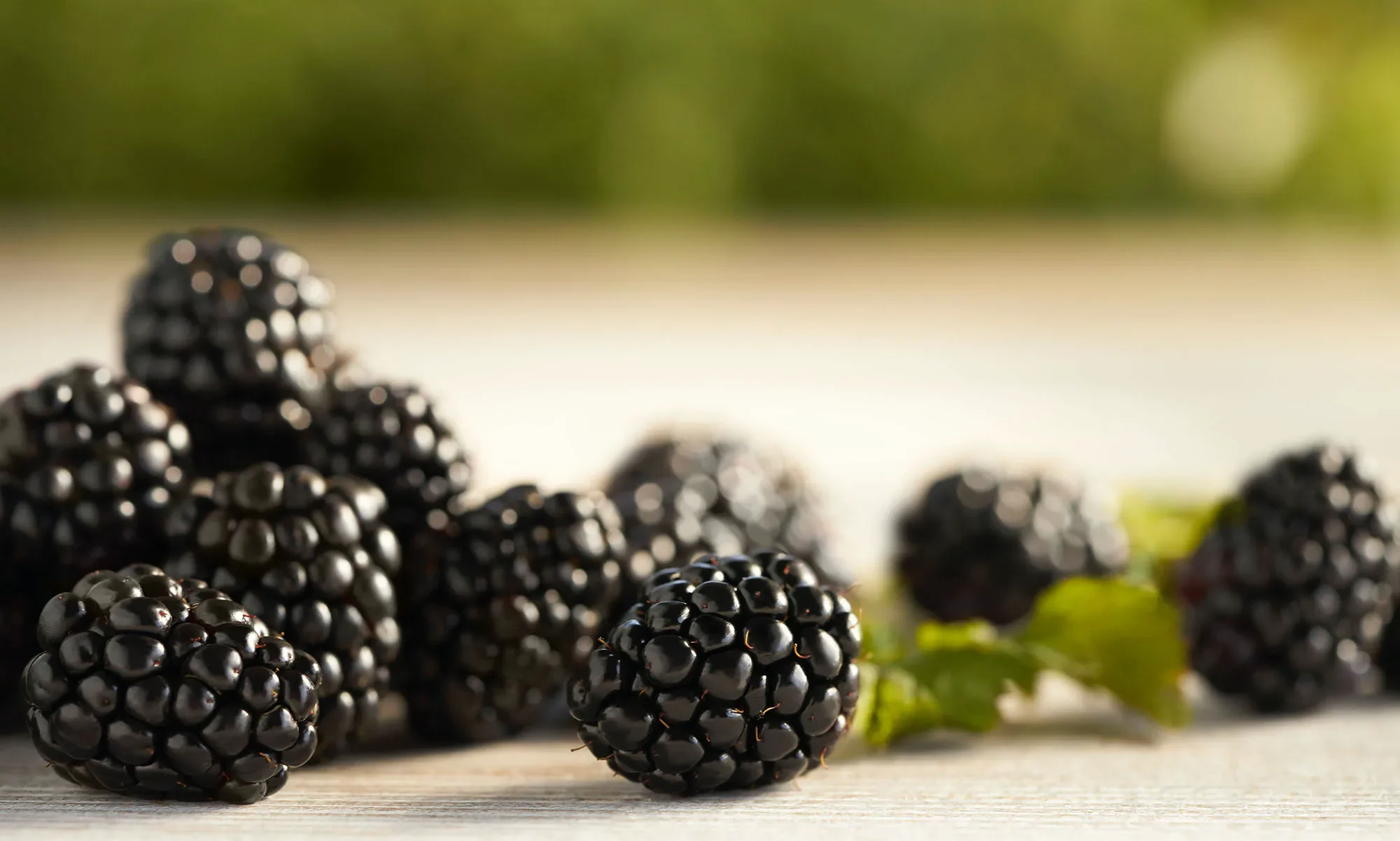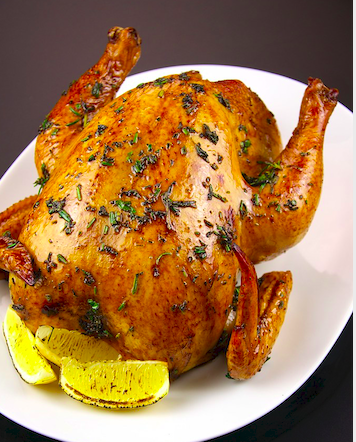A roasted chicken is one of life’s simple joys…and it’s so easy it can be a weeknight meal.
When I first started cooking for myself, I thought that all roasted chickens had to be stuffed. That made it a rather more complicated affair than it actually needs to be, and it also ended up steaming the meat while leaving the skin rather underwhelming.
With Thomas Keller’s recipe, your home will smell amazing, the chicken’s skin will be golden and salty, and the flesh will be moist and perfect. Add a hearty salad and a glass of wine, and you’ll be set.
Thomas Keller’s Simple Roast Chicken
Serves 2 // 382 calories, 22g fat, 41g protein, 3g net carb
(Serving = half a breast + leg & thigh)
4- to 5-pound organic free-range chicken
Extra virgin olive oil
Kosher salt and freshly-ground black pepper
2 teaspoons minced thyme (optional)
To serve: Kerrygold butter & Dijon mustard (not counted in calories, above)
I use an Alton Brown trick and add a pizza stone to the rack above the chicken and preheat the oven for about half an hour. This adds to the crispiness of the breast skin.
Here are Thomas Keller’s Instructions—
“Preheat the oven to 450°F.
“Reach inside the cavity of the chicken and remove the bag of giblets—if you can’t find them, check in the neck cavity. The giblets can be discarded, saved for stock, or used to make gravy later on. Rinse the chicken, then dry it very well with paper towels, inside and out. The less it steams, the drier the heat, the better.
“Salt and pepper the cavity, then truss the bird. Trussing is not difficult, and if you roast chicken often, it’s a good technique to feel comfortable with. When you truss a bird, the wings and legs stay close to the body; the ends of the drumsticks cover the top of the breast and keep it from drying out. Trussing helps the chicken to cook evenly, and it also makes for a more beautiful roasted bird.
Watch Jacques Pepin’s video showing how to truss a chicken.
“Now, salt the chicken—I like to rain the salt over the bird so that it has a nice uniform coating that will result in a crisp, salty, flavorful skin (about 1 tablespoon). When it’s cooked, you should still be able to make out the salt baked onto the crisp skin. Season to taste with pepper.
“Place the chicken in a sauté pan or roasting pan and, when the oven is up to temperature, put the chicken in the oven. I leave it alone—I don’t baste it, I don’t add butter; you can if you wish, but I feel this creates steam, which I don’t want. Roast it until it’s done, 1-to-1-1/2 hours—the exact cooking time will depend on the size and type of your chicken.. (Make sure the thickest part of thigh reaches at least 165 degrees—I prefer 175.)
“Remove it from the oven and add the thyme, if using, to the pan. Baste the chicken with the juices and thyme and let it rest for 15 minutes on a cutting board.
“Remove the twine. Separate the middle wing joint and eat that immediately. Remove the legs and thighs. I like to take off the backbone and eat one of the oysters, the two succulent morsels of meat embedded here, and give the other to the person I’m cooking with. But I take the chicken butt for myself. I could never understand why my brothers always fought over that triangular tip—until one day I got the crispy, juicy fat myself. These are the cook’s rewards.
“Cut the breast down the middle and serve it on the bone, with one wing joint still attached to each. The preparation is not meant to be super elegant. Slather the meat with fresh butter. Serve with mustard on the side and, if you wish, a simple green salad. You’ll start using a knife and fork, but finish with your fingers, because it’s so good.”
Recipe from Bouchon, by Thomas Keller, Copyright © 2004, published by Artisan.
Perhaps a pan sauce is gilding Keller’s lily, but occasionally it’s something I like to make, especially if I don’t add the thyme at the end of roasting.
Pan Sauce
Yield: about 3/4 cup
1 shallot, minced
1 cup organic chicken broth
2 teaspoons Dijon mustard
2 tablespoons unsalted Kerrygold butter
2 teaspoons lemon juice
2 teaspoons minced fresh tarragon (or 1/2 tsp. dried)
Pour off all but 1 tablespoon fat from the chicken’s pan (watch out for hot handles). Add shallot and cook over medium heat until softened. Whisk in juices the chicken has released, adding chicken broth to equal one cup. Whisk in mustard, scraping up any browned bits. Bring to a fast simmer and cook until mixture is reduced to 3/4 cup, about 3 minutes. Stir in more accumulated chicken juices.
Off heat, whisk in butter, lemon juice, and tarragon. Season with pepper to taste; cover to keep warm. Carve chicken and serve with sauce.

